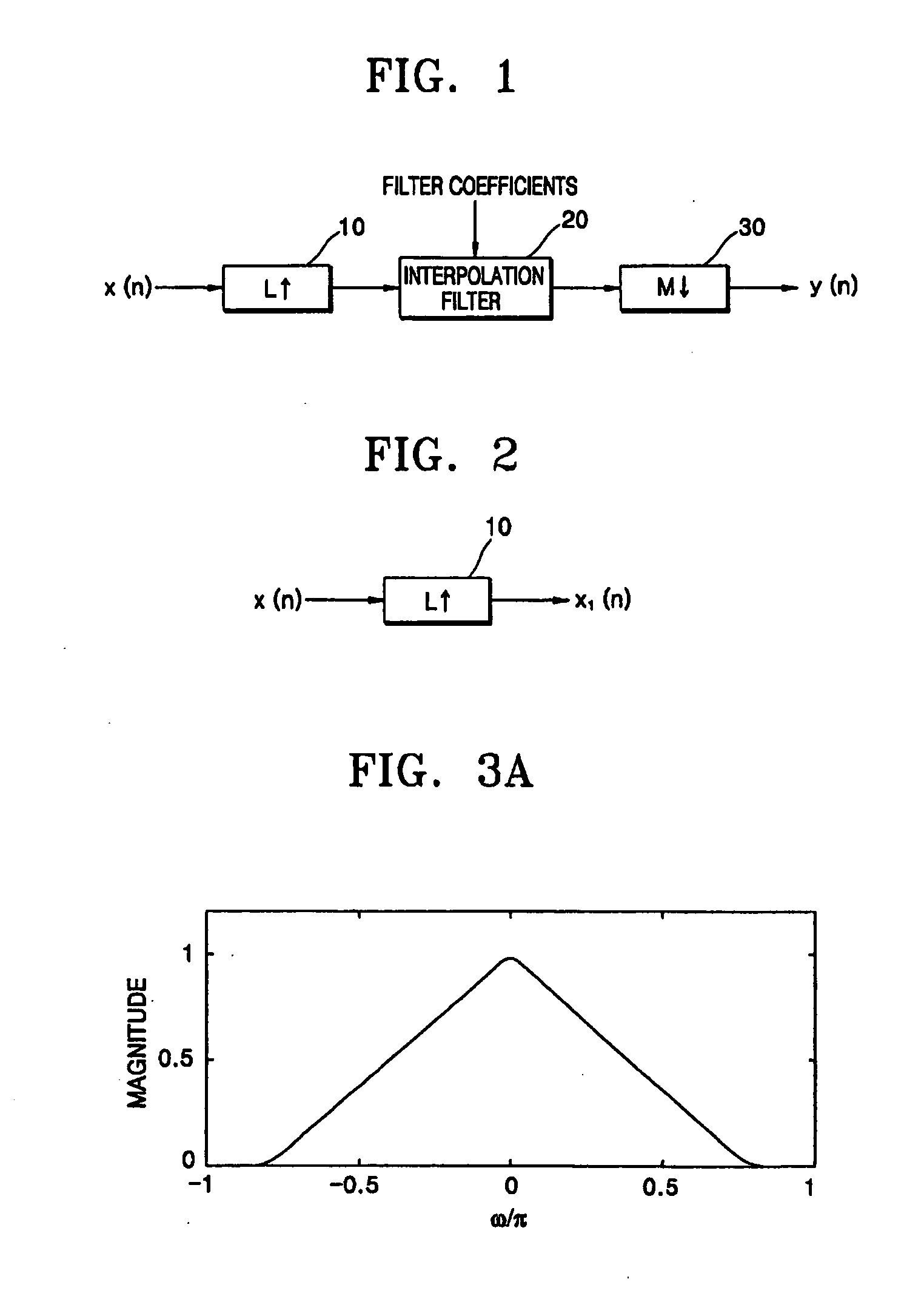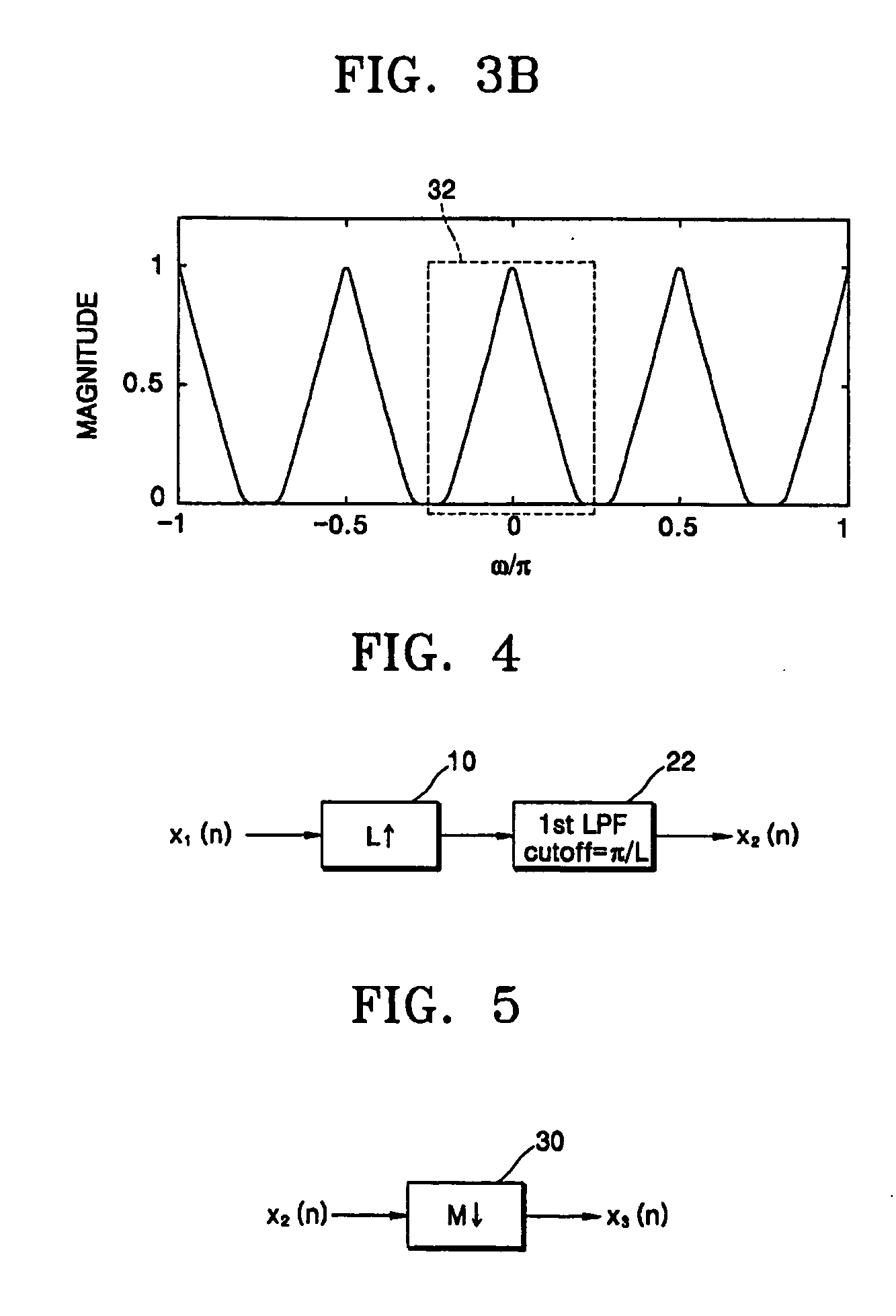Method of converting resolution of video signals and apparatus using the same
a technology of video signals and resolution, applied in the field of video signal resolution conversion and the same, can solve problems such as blurring, deterioration, zigzag artifacts and moiré patterns,
- Summary
- Abstract
- Description
- Claims
- Application Information
AI Technical Summary
Benefits of technology
Problems solved by technology
Method used
Image
Examples
Embodiment Construction
[0035] Reference will now be made in detail to the embodiments of the present invention, examples of which are illustrated in the accompanying drawings, wherein like reference numerals refer to the like elements throughout. The embodiments are described below to explain the present invention by referring to the figures.
[0036]FIG. 1 is a block diagram illustrating a sampling rate conversion for input video signals according to an embodiment of the present invention. According to a typical sampling conversion technique, the up-sampler 10 performs a zero insertion between the pixels of an input video signal x(n) and outputs an up-sampled video signal. The interpolation filter 20 performs low pass filtering for the up-sampled video signal based on a received filter coefficient, and the down-sampler 30 performs down-sampling for the filtered video signal suitably for a desired resolution.
[0037]FIG. 2 is a block diagram illustrating an L-fold up-sampler in FIG. 1. The L-fold up-sampler ...
PUM
 Login to View More
Login to View More Abstract
Description
Claims
Application Information
 Login to View More
Login to View More - R&D
- Intellectual Property
- Life Sciences
- Materials
- Tech Scout
- Unparalleled Data Quality
- Higher Quality Content
- 60% Fewer Hallucinations
Browse by: Latest US Patents, China's latest patents, Technical Efficacy Thesaurus, Application Domain, Technology Topic, Popular Technical Reports.
© 2025 PatSnap. All rights reserved.Legal|Privacy policy|Modern Slavery Act Transparency Statement|Sitemap|About US| Contact US: help@patsnap.com



